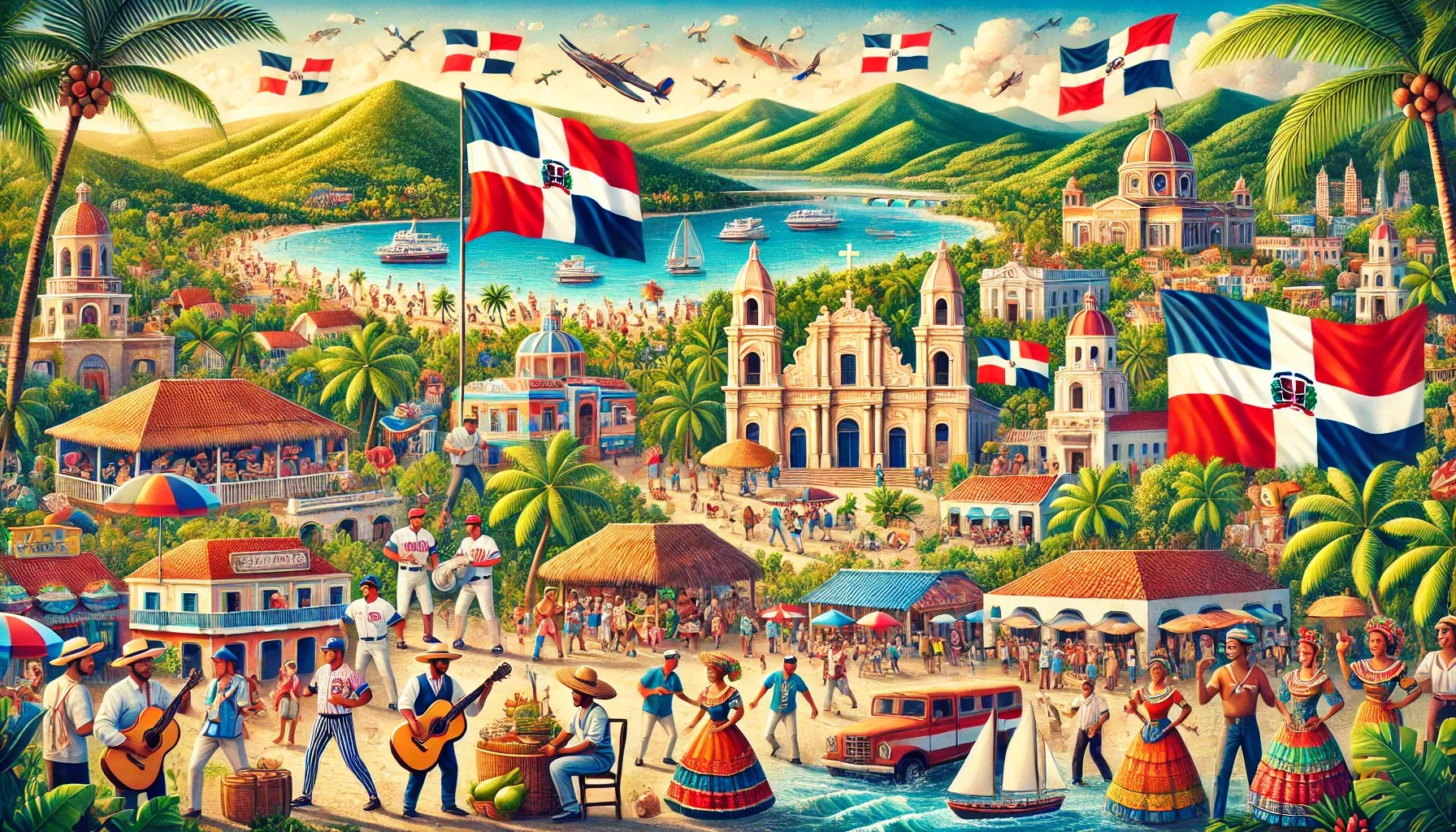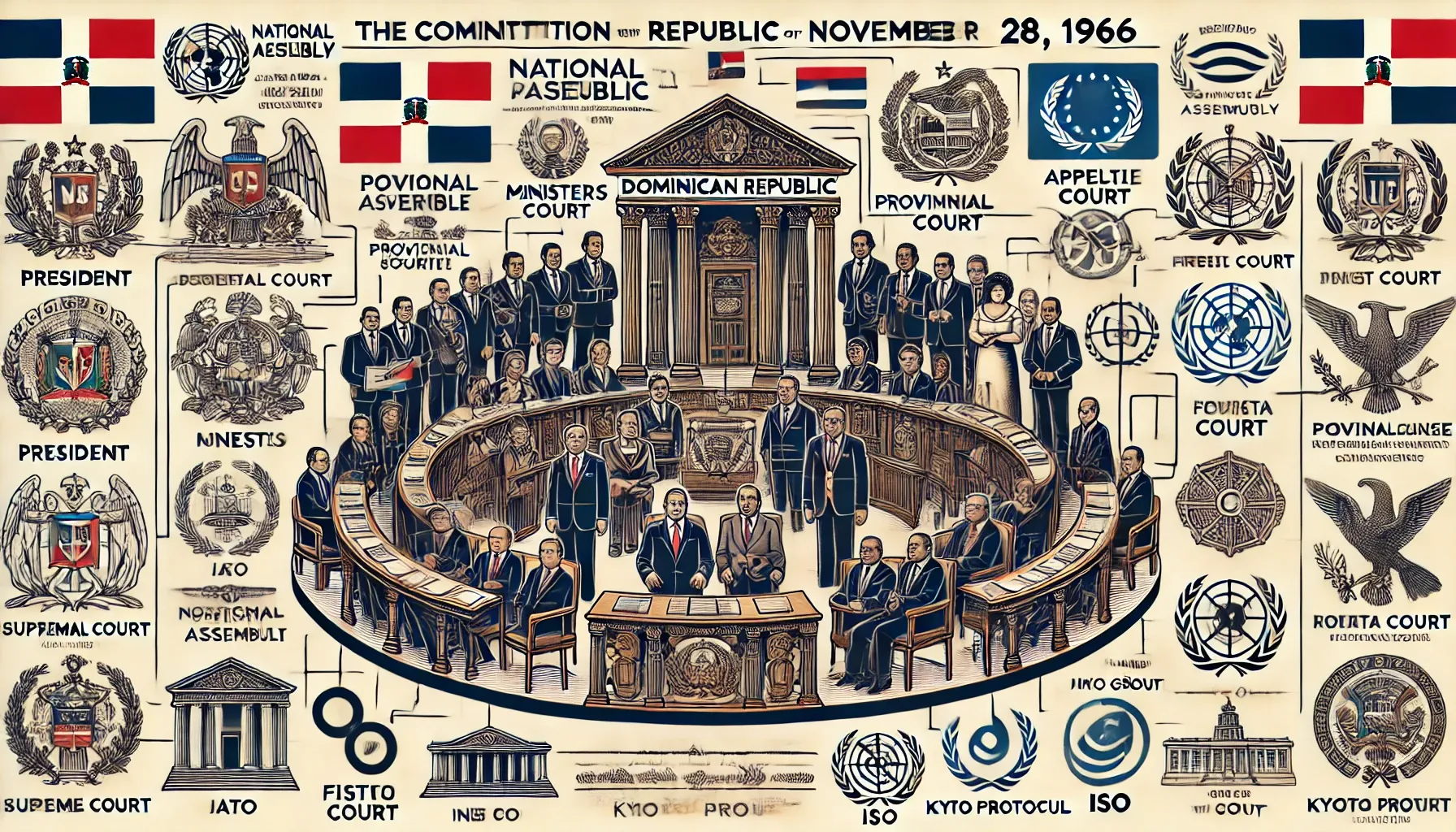Geography and population of the Dominican Republic

- Dominican Republic: geography, population, and history
- Political structure and economy of the Dominican Republic
Geographical location and population
The Dominican Republic is an island nation located on the eastern part of the island of Hispaniola and on some coastal islets, including Saona and Beata, in the Caribbean Sea. Santo Domingo is the capital and largest city of the country. The nature here is very diverse: beautiful beaches, mountainous landscapes, etc. The climate is tropical, with an average annual temperature ranging from 24 to 27 degrees Celsius.
Population and culture
As of 2010, the population of the Dominican Republic exceeded 9.8 million people. The majority of them are mulattos (73%), followed by descendants of Europeans (16%) and Africans (11%). Catholicism is the main religious denomination, but there are also followers of Spiritism and Mormonism. Spanish is the official language.
History and development of the country
Indians inhabited the territory of the Dominican Republic since ancient times. In 1492, Christopher Columbus discovered this island and began its colonization. In the 17th century, the western part of Haiti came under French control, while the eastern part came under Spanish control. In 1844, the Dominican Republic was established in the east after an anti-Haitian uprising. After facing economic difficulties, the country became dependent on the United States. During World War II, the Dominican Republic declared war on the Axis powers. The 20th century saw coups, crises, and U.S. interventions. Currently, the situation in the country is stable.
Political structure of the Dominican RepublicIt is based on the Constitution adopted on November 28, 1966. It establishes the foundations of democracy in the country. The president is elected for a four-year term through universal direct voting.
9 October 2024
9 October 2024
9 October 2024
29 September

International relations of the Dominican Republic
The Dominican Republic is a member of several international organizations, such as the UN, WTO, UNESCO, FAO, Interpol, IAEA, ISO, and also participates in the Kyoto Protocol and the Rio Group (Commonwealth of Latin American countries).Economy and the move towards stability
The economy of the Dominican Republic operates with the national currency - the Dominican peso (DOP). With the arrival of Leonel Fernández in the presidency in August 2004, the country began to move towards economic stability and growth. The gross national product growth in 2005 was 9.3%, employment increased by 2.1%, and inflation decreased from 28.7% to 7.4%. Success continued in 2006, with GNP growth reaching leadership levels in Latin America at 10.7%, while inflation dropped to 5%. National policies and structural reforms support the integration of the Dominican Republic into the global economy.Foreign trade and export
The USA is the main trading partner of the country, accounting for 87% of its exports. Goods produced in free export zones are exported, such as clothing and footwear, as well as nickel, rum, sugar, coffee, cocoa, and tobacco. In turn, the country imports food products, oil, raw materials for industry, and capital goods.Holidays and cultural features
Among significant holidays
Introduction
As the author of this material, I want to emphasize that the Dominican Republic is a unique place where history, culture, and nature intertwine, creating a distinctive character. The discovery of America began right here, and since then, these lands have witnessed numerous historical events that have shaped the face of the modern country.
History of the Dominican Republic
The Dominican Republic is not only about a tropical climate and beautiful beaches, but also has a rich history that tells of the struggle for independence, colonial wars, and the pursuit of a democratic society. The constitution of 1966 laid the foundations for the modern political system, which, despite all challenges, has managed to ensure stability and development.
Economy of the Dominican Republic
Dominican Peso and Economic Growth
The economy of the country, which has gone through unstable periods, is now demonstrating impressive growth rates. President Leonel Fernandez and his team have implemented significant reforms that have put the country on the path to sustainable development. The Dominican Republic is actively integrating into the global economic space, and its successes on this path are truly impressive.
Trading Partner and Export
The main trading partner of the Dominican Republic is the United States (87% of exports). The country exports goods produced in free export zones (clothing, footwear), as well as nickel, rum, sugar, coffee, cocoa, and tobacco; it imports food products, oil, raw materials for industry, and capital goods.
Culture of the Dominican Republic
The culture of the Dominican Republic is a vibrant blend of African, European, and indigenous traditions. Holidays and weekends, such as the Feast of Our Lady of Altagracia or Independence Restoration Day, are not just dates on the calendar, but living traditions that are preserved and passed down from generation to generation.
Conclusion
In conclusion, I want to say that the Dominican Republic is a country that continues to develop and amaze. Its history, culture, and economy are examples of how one can overcome the challenges of the past and move forward while preserving its uniqueness and individuality.
Comment
Popular Posts
9 October 2024
1485
9 October 2024
9939
29 September
374
Popular Offers

Subscribe to the newsletter from Hatamatata.com!
Subscribe to the newsletter from Hatamatata.com!
I agree to the processing of personal data and confidentiality rules of Hatamatata











